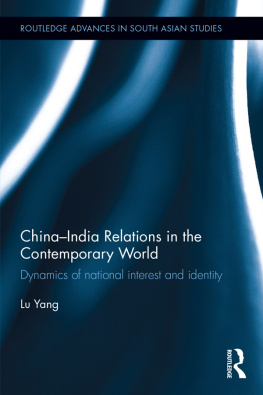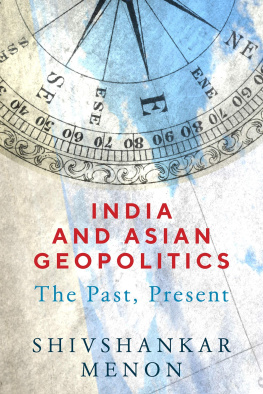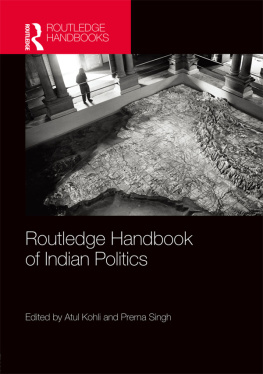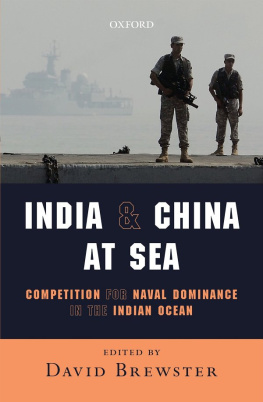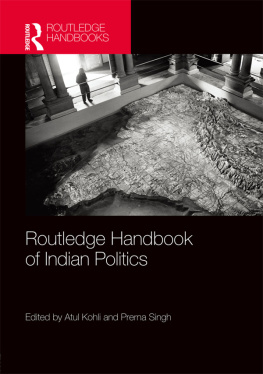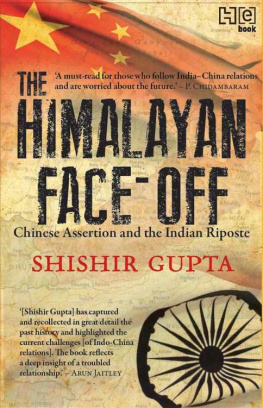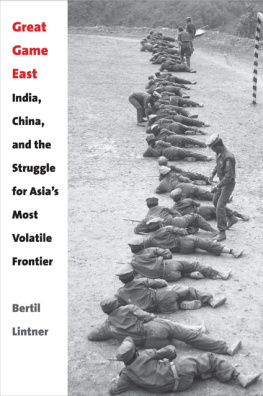THE BROOKINGS ESSAY
In the spirit of its commitment to high-quality, independent research, the Brookings Institution has commissioned works on major topics of public policy by distinguished authors, including Brookings scholars. The Brookings Essay is a multi-platform product aimed to engage readers in open dialogue and debate. The views expressed, however, are solely those of the author.
You can access the entire Brookings Essay series online at
www.brookings.edu/essay
Copyright 2013
THE BROOKINGS INSTITUTION
1775 Massachusetts Avenue, N.W., Washington, DC 20036.
www.brookings.edu
All rights reserved. No part of this publication may be reproduced or transmitted in any form or by any means without permission in writing from the Brookings Institution Press.
ISBN 978-0-8157-2583-1 (ebook)
China pop. 1.3 Billion; India pop. 1.24 Billion
In early February last year, Wang Lijun, the police chief of the Chinese megacity Chongqing, drove 200 miles through the night to seek refuge in the U.S. Consulate in Chengdu, the capital of neighboring Sichuan Province. Wang's escape was part of a shadowy intrigue that became a sensational public scandal involving murder, money, power, adultery, fist fights, car chases, and disguises. It triggered tension between two Chinese provinces, nearly pulling the United States into the middle of a Chinese domestic political crisis, and, ultimately, led to the downfall of Bo Xilai, the former Chongqing party chief, now a fallen star who just last month was sentenced to life in prison.
For 18 months the world was riveted by this story in all its sensational and gory details, but few took notice of one of its more anomalous features. The municipality of Chongqingwhich has the standing of a provinceis China's largest city, home to 30 million people. That is roughly the population of Canada, packed into an inland territory roughly the size of South Carolina. If it were a country, Chongqing would be the 41st largest in the world. That means there would be over 150 countries that are smaller; yet almost all of those countries have U.S. embassies in their capitals, and many have additional U.S. consulates in other cities. Chongqing hosts dozens of American businesses and exports about $7 billion a year. Yet it has no U.S. diplomatic representation. That was why Wang Lijun had to drive over three hours from China's largest city to find an American diplomat.
Flash to the other side of the Himalayasaround 2,000 miles from Chongqingto the Indian state of Gujarat, where Narendra Modi is chief minister (equivalent to governor). His star still rising after ten years in power, Modi has helped Gujarat become India's leader in manufacturing and exports. Domestic and foreign corporations have flocked to Gujarat because of the business-friendly environment Modi cultivated. In early September, he was designated by the BJP (Bharatiya Janata Party), the main opposition party to the Congress Party-led current government, to be its candidate for prime minister in next year's parliamentary elections.
Modi has his detractors, however, and has had his American visa revoked, thanks to a provision in U.S. law that bars any foreign government official who directly carried out, at any time, particularly severe violations of religious freedom. This is a result of the fact that Modi has been blamed by manythough never chargedfor promoting Hindu-on-Muslim violence that erupted in Gujarat in 2002. The riots killed over a thousand, three out of four being Muslim. If the State Department were to revoke the ban, and Modi sought to visit the United States, the nearest American consulate would be 300 miles away, in Mumbai, the capital of the neighboring state of Maharashtra.
Yet Modi presides over 60 million Gujaratis. If Gujarat were a separate country, it would be the 23rd largest in the world, slightly smaller than France, where the U.S. has seven consulates in addition to its embassy in Paris. And Gujarat's exports$61 billion in 2011would put it in the top 50 countries in the world.
local leaders are increasingly running much of India and China, which are home to a third of all humanity, from the bottom up.which means that these countries need to be understood from the inside out.
Bo Xilai and Narendra Modi are but two of the many prominent figures in the 60-some provinces, states, territories, and other major administrative units that make up China and India. For a sense of how many people are involved, take the United States and add Mexico, Brazil, plus the rest of North America and South America, then add the 500 million people living in the European Union. That adds up to roughly the 1.3 billion people who live in China alone. India is only slightly smaller, with 1.24 billion.
While Bo and Modi have governed districts the size of major nations, they are cut off from western centers of power. Bo and Modi gained international reputations, which makes them the exception, since most outsiders tend to follow only those politicians based in Beijing and New Delhi. Reporting from capitals and scattered consulates is important, but it gives us partial and often distorted glimpses of what is going on in the rest of China and India.
A Family Odyssey through India and China
In early 2012, my wife Kristen and our daughters Annika and Kyri joined me in a five-month odyssey. We visited 20 states or provinces in the two Asian giants. We travelled by plane, train, automobile, boat, three-wheeled motorized rickshaw, and bicycle, as well as elephant and camel on occasion. We interviewed national and local political leaders (including Modi). We also met with corporate executives, journalists, academics, diplomats, religious leaders, teachers, farmers, slum dwellers, andnot just inevitably but usefullywaiters and taxi drivers.
The questions we asked fell into three categories: How do Chinese provinces and Indian states work? How do their leaders seek to balance local and national priorities and value systems? How do their citizens as well as their leaders view various global issues?
In Beijing and New Delhi, as in Shanghai and Mumbai, Chennai and Chengdu, Ahmadabad and Hangzhou, we often heard the same response: Why do you care?
The answer, in brief, is because local leaders are increasingly running much of India and China, which are home to a third of all humanity, from the bottom up. That is affecting how both countries act in the world, which means that these countries need to be understood from the inside out.
Much the same is true of the United States. In talking to the people I met in China and India, I told them what I have learned about the workings of the American government over the last two decades. Federalism, the system of government under which power is divided between a central government and subsidiary, largely self-governing units is in ever-evolving flux in the United States. That is, there is a constant push-pull between the states and the metropolitan areas on the one hand and the federal government on the other. And that process has a huge impact on our foreign policy.
As a junior staffer at the State Department and White House, I helped prepare Secretary of State Warren Christopher and President Bill Clinton for dozens of meetings with foreign leaders. Top officials in the executive branch have to heed the voices of members of Congress on foreign policy issues, especiallythough by no means exclusivelyon economic and trade issues. Within the White House, we often felt that we spent as much time negotiating domestically as we did internationally. Still, President Clinton was able to assemble coalitions of senators, from both sides of the aisle, to balance the national budget and to negotiate key trade pacts such as the North American Free Trade Agreement and the launch of the World Trade Organization. Of course he also experienced his share of frustration over domestic obstacles to diplomacy, for example when he found himself unable to break legislative gridlock on nuclear weapons talks and on trade deals. Another stalemate, which exists to this day, occurred when Democratic senators from West Virginia, Louisiana, Nebraska, and Missouri crossed party lines to join with Republicans to help kill a national approach to protect the climate.



